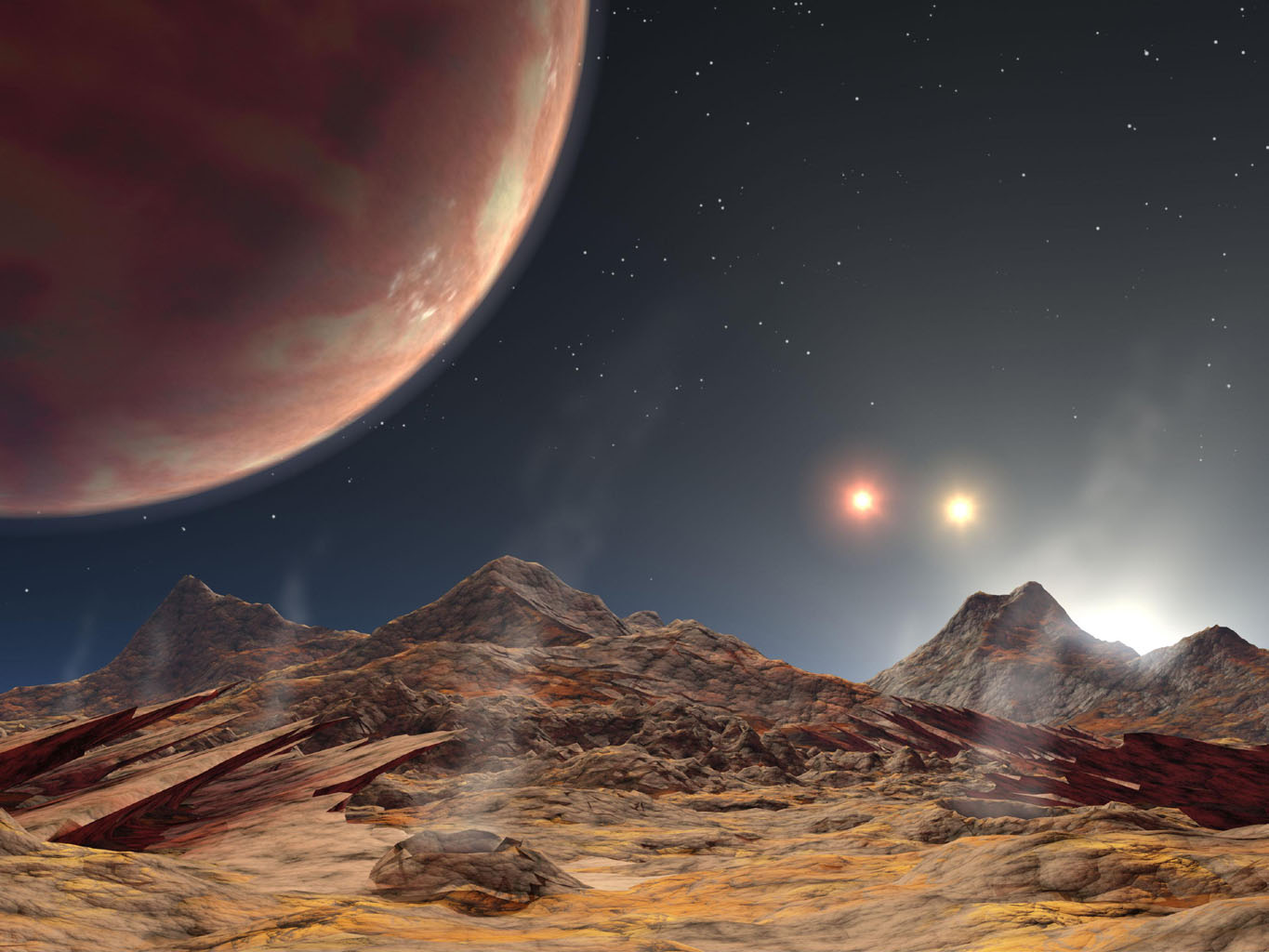This Newfound Alien Planet Has 3 Suns

Astronomers think they've spotted an alien planet with three suns on its horizon — but that still isn't the most interesting thing about the strange new world's sky.
Scientists found the world, which they've dubbed LTT 1445Ab, in data gathered by NASA's Transiting Exoplanet Survey Satellite (TESS). LTT 1445Ab orbits just one of the three stars, all of which are red dwarfs in the latter half of their lives, and the system is about 22.5 light-years away from Earth.
"If you're standing on the surface of that planet, there are three suns in the sky, but two of them are pretty far away and small-looking," co-author Jennifer Winters, an astronomer at the Harvard-Smithsonian Center for Astrophysics, told New Scientist. "They're like two red, ominous eyes in the sky."
Related: The Strangest Alien Planets (Gallery)
From the TESS data, the scientists believe the planet is rocky, about a third larger than Earth and is at most about 8 times as massive as our home. It's awfully toasty on the surface — 320 degrees Fahrenheit (160 degrees Celsius) — and the planet circles one star of the triplet every 5 days.
But what's particularly special about it is something that scientists can't yet, but may soon be able to, characterize: its atmosphere. Because the stars in question are red dwarfs that are located reasonably close to Earth, and because the system is arranged so that the planet passes between stars and Earth, scientists may actually be able to get a glimpse of any gases surrounding the planet using telescopes based on Earth.
Astronomers can't quite take advantage of the opportunity yet, but it's exactly the sort of tantalizing prospect that TESS was designed to find. The instrument, which is halfway through its initial two-year survey of most of the sky, looks for planets with short years located around nearby, bright stars — the perfect targets for later instruments to peer at atmospheres.
Get the Space.com Newsletter
Breaking space news, the latest updates on rocket launches, skywatching events and more!
- NASA's TESS Exoplanet-Hunting Mission in Pictures
- Sweet Super-Puffs: These 2 Exoplanets Have the Density of Cotton Candy
- The Strangest Alien Planets (Gallery)
Email Meghan Bartels at mbartels@space.com or follow her @meghanbartels. Follow us on Twitter @Spacedotcom and on Facebook.
Join our Space Forums to keep talking space on the latest missions, night sky and more! And if you have a news tip, correction or comment, let us know at: community@space.com.

Meghan is a senior writer at Space.com and has more than five years' experience as a science journalist based in New York City. She joined Space.com in July 2018, with previous writing published in outlets including Newsweek and Audubon. Meghan earned an MA in science journalism from New York University and a BA in classics from Georgetown University, and in her free time she enjoys reading and visiting museums. Follow her on Twitter at @meghanbartels.









